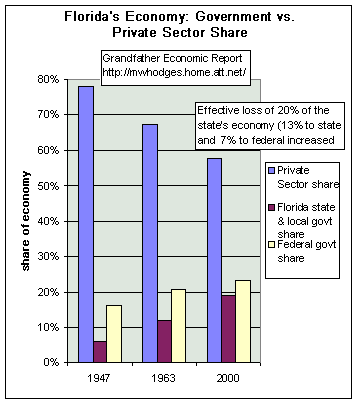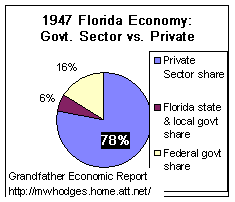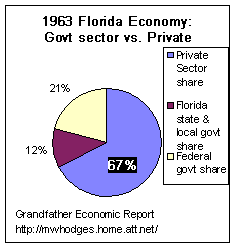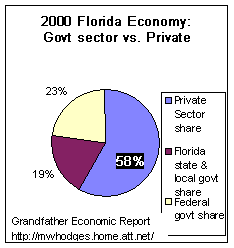A breakdown of the components |
|
|
This bar chart shows for each of the three years (1947, 1963, 2000) the share of
Florida's economy represented by federal spending (yellow bar), vs. Florida state &
local spending (brown bar), and the remainder left to the private sector (blue bar) For 1947, state & local spending was 6% of the economy, federal spending (national. average) was 16%, leaving 78% of the economy left to the private sector (blue line) The blue line for the private sector drops each year due to expansion of federal and state & local government spending, faster than growth of the economy. For 2000, state & local spending was 19% of the economy, federal spending (national. average) was 23%, leaving just 58% of the economy left to the private sector (blue line). That's a huge 20 point drop in the private sector's share. |
| The above data includes actual state & local spending for Florida from the spending section of this report for 1963-2000, with the 1947 plot being the national state & local government average. The federal spending component of this chart is the national average. It is not known to the author if Florida consumes a higher percentage of total federal spending than the national average. If so, the red line above would be steeper than shown, and the private sector would reach a lower total. | |



